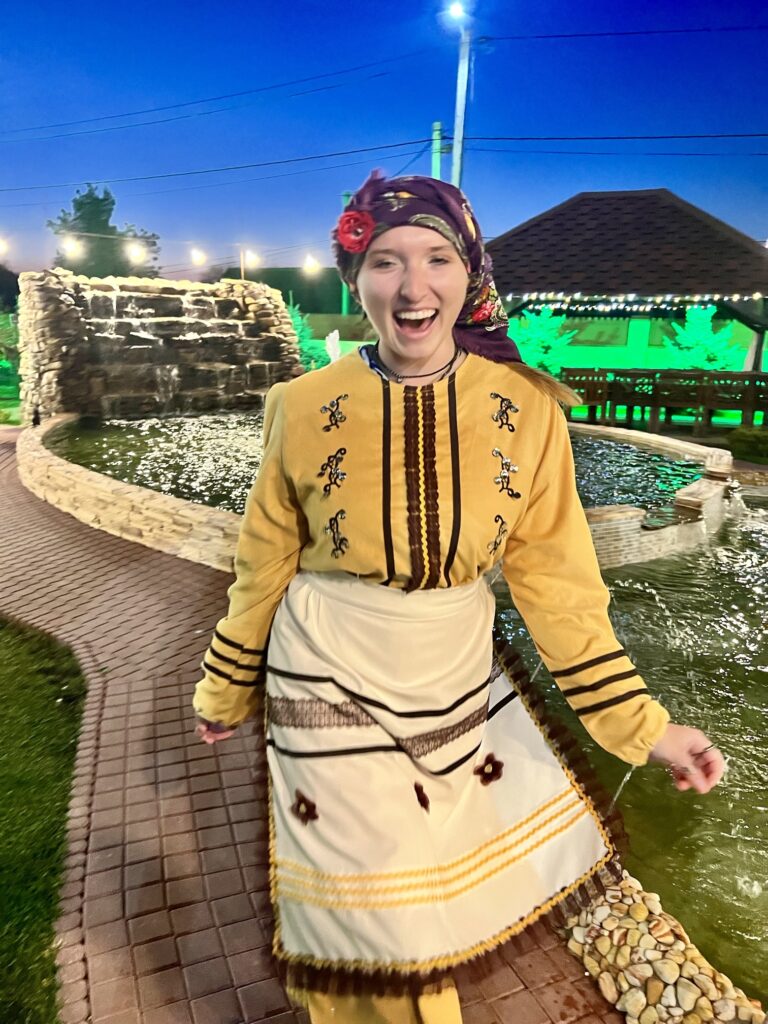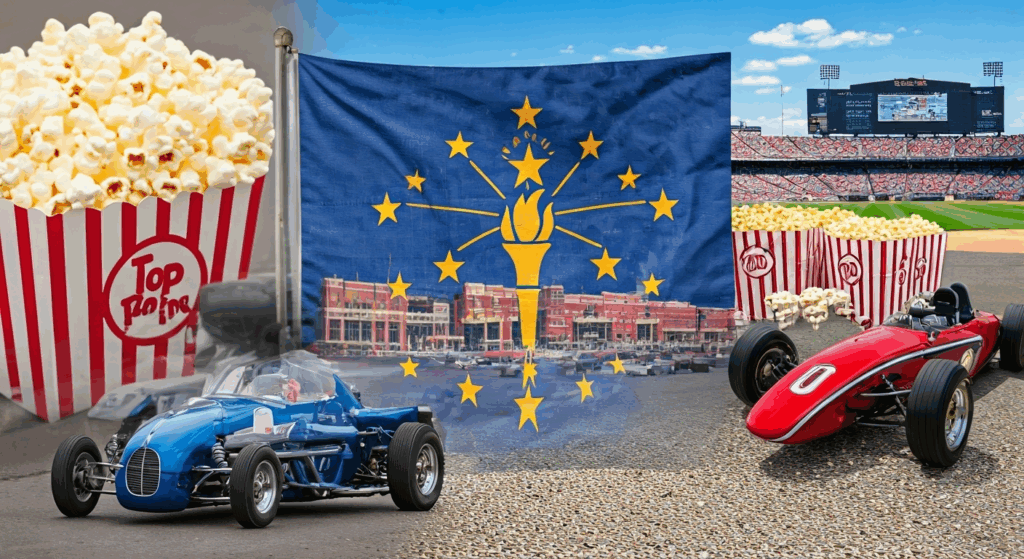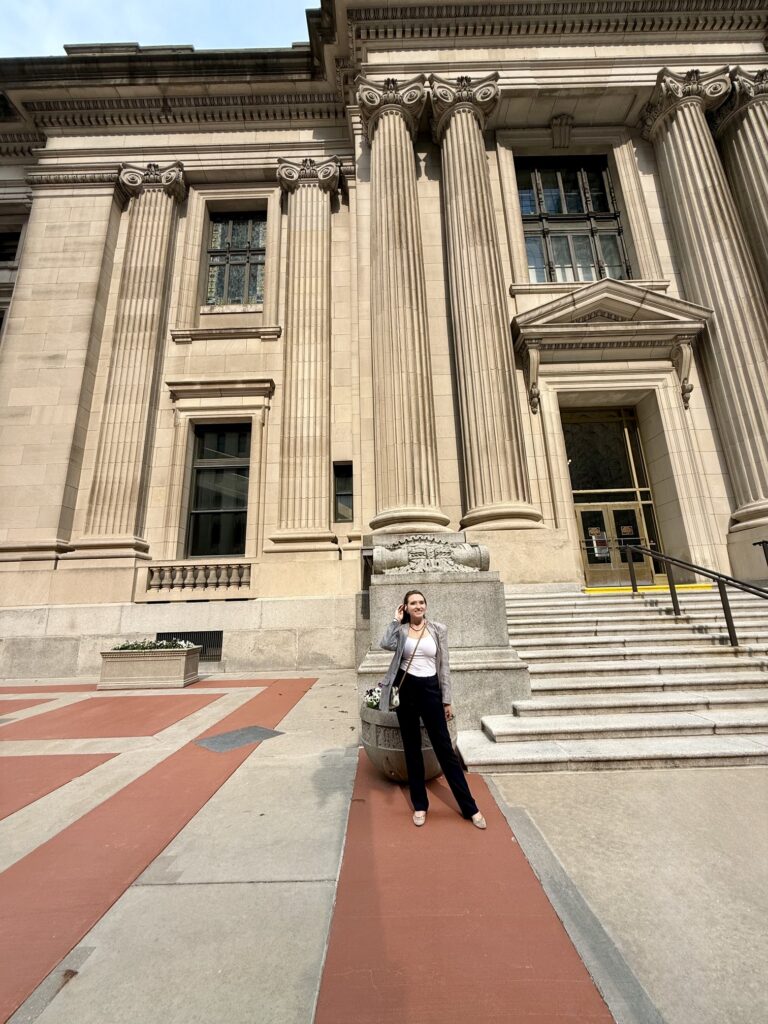
Traditions in Moldova: Celebrating Heritage and History
 November 24
November 24
 17 min read
17 min read

Traditions in Moldova: Celebrating Heritage and History-Key Highlights
- Discover Moldova’s unique cultural heritage shaped by its history and traditions.
- Immerse yourself in vibrant festivals like Martisor and the Wine Festival.
- Experience the energy of Moldovan folk music and dance, including the lively Hora.
- Explore the country’s rich wine culture and viticultural traditions.
- Get to know the warm hospitality of the Moldovan people.
- Appreciate the blend of ancient customs and modern influences in Moldova’s cultural landscape.
Introduction
Located in southeastern Europe, the Republic of Moldova is a country rich in history and culture. It has a rich cultural heritage shaped by its interesting history. Many influences have created a strong national identity. You can see this in the country’s lively traditions, friendly people, and beautiful art. Moldova has colorful festivals and unique folk costumes that show its culture. This culture respects its past and also enjoys the present. During your visit to Moldova, you are for sure to catch a glimpse of how previous traditions have influenced today’s culture and modern traditions. Let’s explore the various traditions in Moldova!
The Rich Tapestry of Moldovan Culture
Moldovan culture is full of life and connects deeply with its history. The country is located between Romania and Ukraine, which means it has share many years of contact with different cultures. Each culture has added something special to Moldovan traditions, language, and arts. Still, Moldova has kept its own unique identity, grounded in its Romanian roots and the strong spirit of its people.
You can see this mix of cultures in many aspects of life. From the delicious food like mamaliga (cornmeal porridge) and sarmale (stuffed cabbage rolls) to the lively folk music and dance.
The Influence of History on Modern Traditions
Moldova has gone through many changes in its history. There have been times when it was independent and times when other countries ruled it. This has shaped its culture deeply. From the 14th to the 19th centuries, the Principality of Moldova grew and created its special traditions and identity. In the 16th century, the Ottoman Empire brought in new cultural elements.
In the 19th century, the Russian Empire took over Bessarabia. This area still makes up a big part of Moldova today. This change brought a lot of cultural sharing. Later, when the Soviet Union was in control, it also played a role in shaping Moldovan culture, despite its strict rule.
Even with all these changes, Moldovan traditions have stayed strong. The spirit of the people shines through in their lively folk culture, the way they keep their language alive, and their warm hospitality. The effects of these historical times show in Moldova’s buildings, food, and arts, making its culture rich and complex.
Preserving Cultural Identity Through Festivals
Festivals in Moldova are more than just celebrations. They show the country’s rich cultural identity. One important national holiday is Limba Noastră, celebrated on August 31st. This day marks the approval of the Moldovan language as the official language. It shows how much the country cares about keeping its language alive.
Another special festival is Martisor, which takes place on March 1st. This event highlights Moldova’s bond with nature and its old traditions. People exchange Martisor charms with red and white threads. These threads symbolize the start of spring and bring good luck. Community events like this bring people together and help them feel proud of their Moldovan traditions.
From the happy times of Martisor to the cultural focus during Limba Noastră and local fairs, these events help Moldovans connect with their roots. They allow people to share their customs and ensure that these traditions are passed to future generations.
Limba Noastră
Celebrated every year on August 31st, Limba Noastră, which means “Our Language,” is more than just a special day. It shows what it means to be Moldovan. This day remembers when Moldovan became the official language in 1989. This change was important after many years of people not being able to use their language under the Russian Empire and the Soviet Union.
Making Moldovan the official language was a big step for national identity. It helped people feel connected to their roots. This allowed Moldovans to celebrate their language and culture freely. Limba Noastră shows the strong spirit of the Moldovan people and how they want to keep their heritage alive.
Today, Limba Noastră is celebrated with a lot of pride and joy. There are traditional music and dance shows, poetry readings, and language contests. These events show the beauty and richness of the Moldovan language.
Mosaic Artwork
Moldova’s mosaic artwork is found on the walls of many buildings. It gives us a special way to see the country’s cultural heritage. These mosaics are more than just pretty designs; they mix art and history to show Moldova’s place in Eastern Europe.
The detailed patterns are made from colorful tiles. They show different themes, like daily life, traditions, and important historical people and events. In the Soviet era, these mosaics were a type of public art. They promoted socialist ideas and celebrated workers’ achievements.
Today, these pieces of Soviet art show us Moldova’s recent past and its changing culture. Some mosaics are kept as historical treasures, while others are transformed by modern artists. They bring new energy to this special kind of Moldovan art.
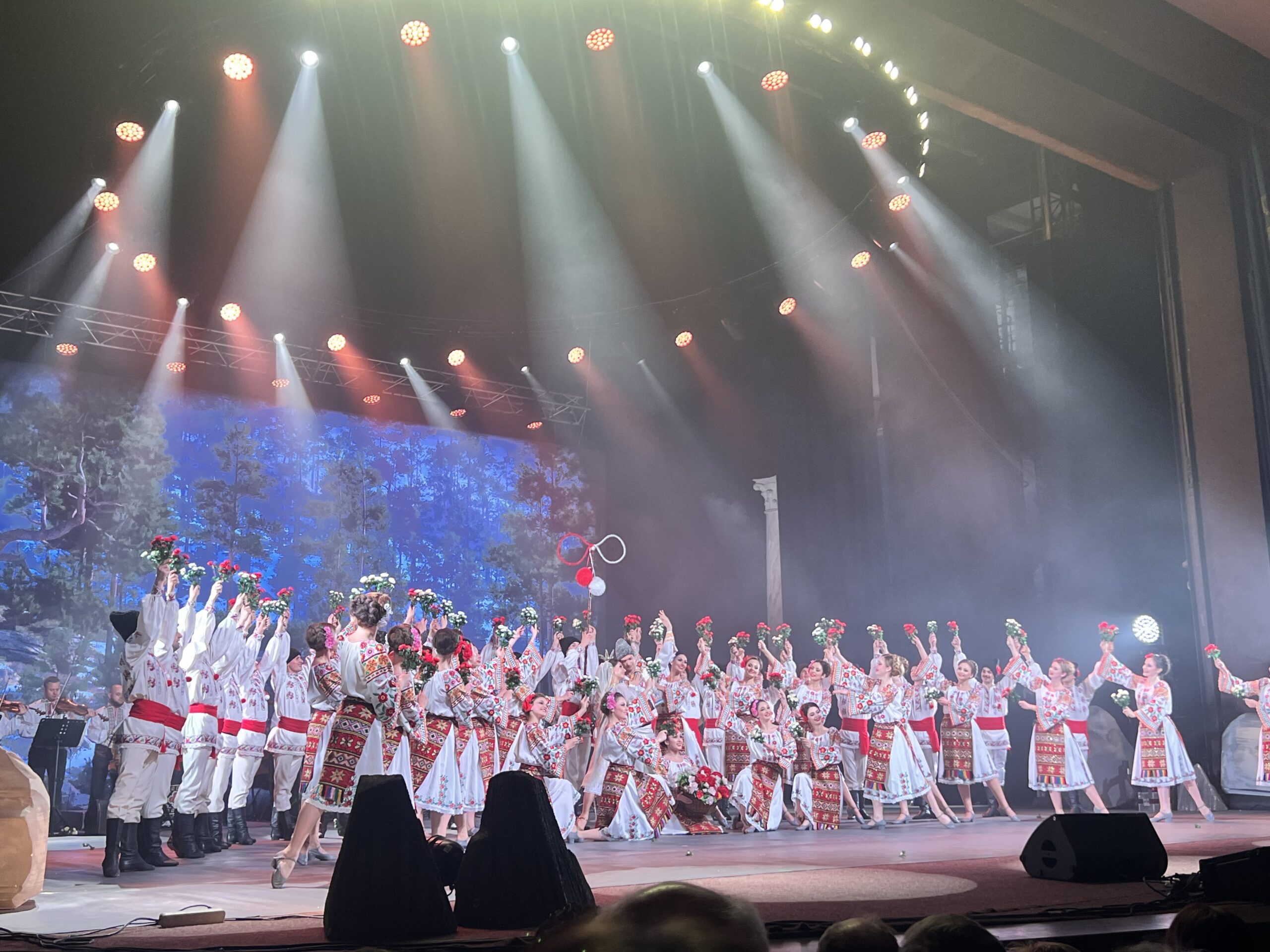
Folklore and Music: The Soul of Moldovan Celebrations
Music and folklore are very important for Moldovan celebrations. They bring energy and tradition to every event. From lively folk songs that families have shared for years to bright costumes and fancy footwork in traditional dances, these art forms show what Moldovan culture is all about.
Whether it’s the happy tunes at a wedding or the clapping and stomping at a village festival, Moldovan folklore and music connect people. These traditions create a shared experience for everyone, no matter their age. They are carefully kept and celebrated, helping Moldovan culture stay alive and strong.
Folk Music and Dance: Expressions of Moldovan Spirit
The heart of Moldovan celebrations is its lively folk music and dance. Folk songs tell stories of love, struggle, and daily life. Instruments like the cobza (a stringed instrument), the fluier (a type of flute), and the tambal (a hammered dulcimer) create a joyful sound for traditional dances such as the Hora and the Sârba.
The Hora is a circle dance that represents unity and happiness. You can often see it at Moldovan festivals and weddings. Its easy steps and fun energy invite everyone to take part. In contrast, the Sârba features fast footwork and an upbeat rhythm. This dance shows the skill and energy found in Moldovan dance traditions.
Additionally, Moldovan culture is richer thanks to its ethnic minorities. Communities like the Gagauz and Ukrainians offer their own music and dance styles. This mix makes folk performances a beautiful reflection of Moldova’s diverse culture.
Moldova’s Legendary Musicians and Their Legacy
The Republic of Moldova has a rich musical heritage. Many famous artists have made an impact both in their country and around the world. These musicians, singers, and composers not only provided entertainment but also helped to preserve and promote Moldovan culture.
Names like Maria Bieșu stand out. She is known as one of the best opera singers of the 20th century. Then there is Eugen Doga. He is a famous composer recognized for his film scores and ballets. Their work has placed Moldovan music firmly on the global stage, inspiring many artists and improving the country’s artistic scene.
Today, we still feel their influence. Their timeless music lives on through many music schools, festivals, and institutions. These continue to support young talent and celebrate the importance of music in Moldova.
Traditional Moldovan Attire: A Symbol of Pride
Traditional Moldovan clothes show off the country’s rich cultural heritage. These colorful outfits are more than just what people wear. They are a source of national pride and connect people to Moldova’s history.
The well-known “Ia” blouse features delicate stitching. You can also see unique vests and hats worn by both men and women. Each item shares a tale of tradition, skill, and cultural identity. These outfits are not just for museums; they are worn with pride at festivals, weddings, and cultural events. This helps to keep Moldovan heritage alive.
Understanding the Elements of Traditional Dress
Traditional Moldovan dress, also known as folk costume, is full of beautiful details and bright colors. It reflects many years of cultural heritage. Each part, from the fabric to the embroidery, has its own meaning and symbolizes the wearer’s region, social status, or marital status.
For women, the main part of the costume is a long, flowing skirt called a “catrinta.” This skirt is usually made from wool or hemp and has woven or embroidered patterns. On top of this, the famous “Ia” blouse is worn. It is made from white linen or cotton and has detailed embroidery around the neck, chest, and sleeves. The Ia is truly a great example of Moldovan craftsmanship.
For men, the traditional outfit includes white linen pants tucked into knee-high boots. They wear a shirt decorated with geometric patterns and a vest that often has fancy beadwork. A wide leather belt, often with metal designs, completes the look. These costumes were once worn every day. Now, they are cherished symbols of cultural identity. You can see them at social gatherings, festivals, and cultural events.
“La” Traditional Blouse and Traditional Costume
The “Ia” traditional blouse truly captures the essence of Moldovan national identity. This piece of clothing is more than just a garment; it shows the rich culture of Moldova. The Ia is a wonderful example of skilled craftsmanship, a sign of women’s artistry, and a strong symbol of Moldovan heritage.
Made from natural materials like linen or cotton, the Ia features detailed embroidery, mainly around the neck, chest, and sleeves. These beautiful designs, often passed down in families, show patterns inspired by nature, including flowers, leaves, and shapes. Each area of Moldova has its own special styles and color choices for the embroidery, adding to the beauty and variety of the Ia tradition.
Now, the Ia is not just a folk costume. It has become a trendy piece of fashion that Moldovan women of all ages wear proudly. Its appeal goes beyond Moldova. People all over the world who love fashion and culture are drawn to it.
The Art of Weaving and Embroidery in Moldova
Weaving and embroidery are very important in Moldovan traditional culture. They show artistic skills that people have passed down over many generations. These crafts also connect people to the land and the resources it offers. In rural areas of Moldova, women work hard to keep these traditions alive. They use old techniques and patterns to create bright textiles that share their heritage.
Moldovan girls learn weaving and embroidery from a young age. They turn natural fibers like wool, linen, and hemp into detailed designs. Using simple looms and needles with colorful yarns, they make carpets, wall hangings, clothes, and home items.
The patterns on these textiles mean more than just beauty. They often symbolize nature, religious beliefs, or key life events. Today, these handmade creations are valued as family treasures. They are proudly shown in homes and passed down through generations. This way, the cherished traditions of weaving and embroidery continue to thrive.
The Moldovan Traditional Woven Carpet
The Moldovan traditional woven carpet is not just something to put on the floor. It is a bright symbol of cultural heritage. It shows the skill of Moldovan women and represents a special type of folk art that still amazes art lovers today. These detailed carpets are often kept in families for generations. They give us a peek into Moldova’s rich history and artistic ways.
Moldovan carpets are handmade with old weaving methods. They are famous for their bright colors and complex geometric patterns. Many designs come from nature and include flowers, leaves, animals, and people. Each part of the design has its own meaning. It often shows old beliefs, traditions, or local features.
Today, skilled artists still make Moldovan carpets. They keep the old techniques and designs alive. These beautiful carpets decorate homes, museums, and galleries all over the world. They highlight the beauty and cultural heritage of this unique art form.
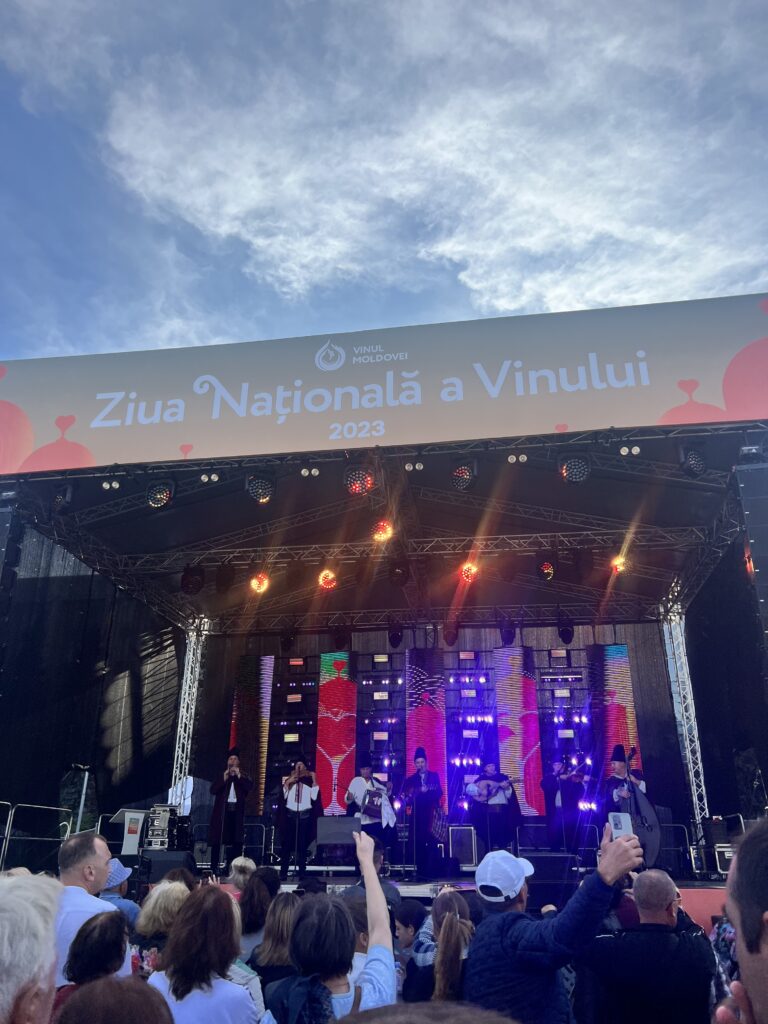
Holidays: A Time for Family and Celebration
Holidays in Moldova are filled with lively religious practices, folk customs, and family get-togethers. This mix shows colorful traditions and old celebrations. Events like Christmas and Easter bring joy, while ancient rituals such as Sanziene and Dragobete allow us to see the spirit of Moldovan culture.
People gather to share a traditional meal, tell stories with family, and take part in old customs. Moldovans cherish these times with open hearts and a strong sense of community. These holidays remind them of their shared background and help to strengthen family ties and keep their ancient traditions alive.
Christmas
Christmas in Moldova is a special time. It is a national holiday that brings joy to the country with white snow and family warmth. People celebrate on both December 25th (New Style) and January 7th (Old Style). This season is for religious events, traditional meals, and happy gatherings.
The smell of cozonac fills the air. Cozonac is a sweet bread filled with walnuts and raisins. Families come together to decorate Christmas trees and get ready for the festive meal. Children go caroling. Their voices fill the cold winter air with songs about the birth of Jesus.
Christmas Eve is for fasting and thinking. Many attend a midnight church service. The celebration reaches its peak on Christmas Day. Families gather to enjoy a great feast, exchange gifts, and celebrate this joyful season.
Easter
Easter in Moldova is a time for important religious celebrations and happy family gatherings. It follows old traditions and happens when nature comes back to life. Homes fill with the smell of freshly baked pasca (sweet bread) and the bright colors of painted eggs.
A key part of the Easter traditions is painting eggs. People often dye them red to symbolize the blood of Christ. These beautiful eggs play a big role in fun games, like the egg tapping game, where participants try to crack each other’s eggs.
The Easter table in Moldova is a treat for the senses. It is full of traditional foods like drob (a tasty lamb dish with herbs), pasca, and colorful eggs. Sour cream, which is common in Moldovan food, goes with many dishes and adds a nice tangy taste to the festive meal.
Sanziene
Celebrated on June 24th, Sanziene is one of Moldova’s most charming festivals. It is based on old stories and traditions. This magical event marks the summer solstice. It is especially lively in rural areas, where people still believe in fairies, magical plants, and ancient customs.
On the night before Sanziene, young women pick wildflowers and make wreaths. They think these flowers have special powers. Legend says that the Sanziene fairies, magical beings linked to nature and fertility, come from the forests. They dance in the moonlit fields and bring good luck to those who honor them.
As night comes, bonfires are lit, and villagers join together to dance and sing traditional songs. They celebrate the longest day of the year and hope to receive blessings from the Sanziene fairies. Sanziene shows Moldova’s rich cultural heritage. It reminds us of a time when people lived in peace with nature and the spirit world.
Dragobete
Celebrated on February 24th, Dragobete is the Romanian and Moldovan version of Valentine’s Day. This celebration connects deeply with folklore and national identity. Passed down through time, it marks the start of spring and the renewal of nature. Dragobete is a mythical figure linked to love, joy, and fertility.
On this day, young men and women show their feelings through fun acts, special gifts, and secret kisses. People believed that joining in the Dragobete festivities would bring them good luck in love for the rest of the year.
While Dragobete lost importance during the communist time, it has seen a big comeback recently. Today, Moldovans happily celebrate this ancient tradition, honoring their romantic identity and keeping the spirit of Dragobete alive.
The Martisor Tradition and its Symbols.
The Martisor tradition is a special celebration for the first day of spring on March 1st. It is important in Moldovan cultural heritage. During this time, the country wakes up from winter. People look forward to warmer days and new beginnings. The Martisor is a small decorative object that symbolizes this change. It also carries hopes for good luck, health, and prosperity.
These lovely gifts are often handmade using red and white threads. The red thread stands for life, passion, and spring’s arrival. The white thread represents purity, innocence, and fresh starts. People believe that wearing a Martisor brings good luck and keeps evil spirits away throughout March.
At the end of March, Martisors are usually tied to blooming fruit trees. This act symbolizes the hope for a fruitful year ahead. This tradition is rich in Moldovan folklore and reminds us how closely nature and human life are connected.
The Independence Day
Independence Day is celebrated every year on August 27th in the Republic of Moldova. This day is very important as it marks the country’s freedom from the Soviet Union in 1991. It was a key moment in Moldova’s history and a big step towards self-rule.
This day is about national pride and remembering the struggle for freedom. Moldovans celebrate by having parades, raising flags, enjoying traditional music and dance, and listening to speeches from government leaders. These activities help everyone think about what independence means and the hopes for the future.
As Moldova is still a young country finding its place in the world, Independence Day is a strong reminder of their spirit. It shows Moldova’s dedication to democracy and its dreams for a future filled with peace, prosperity, and unity.
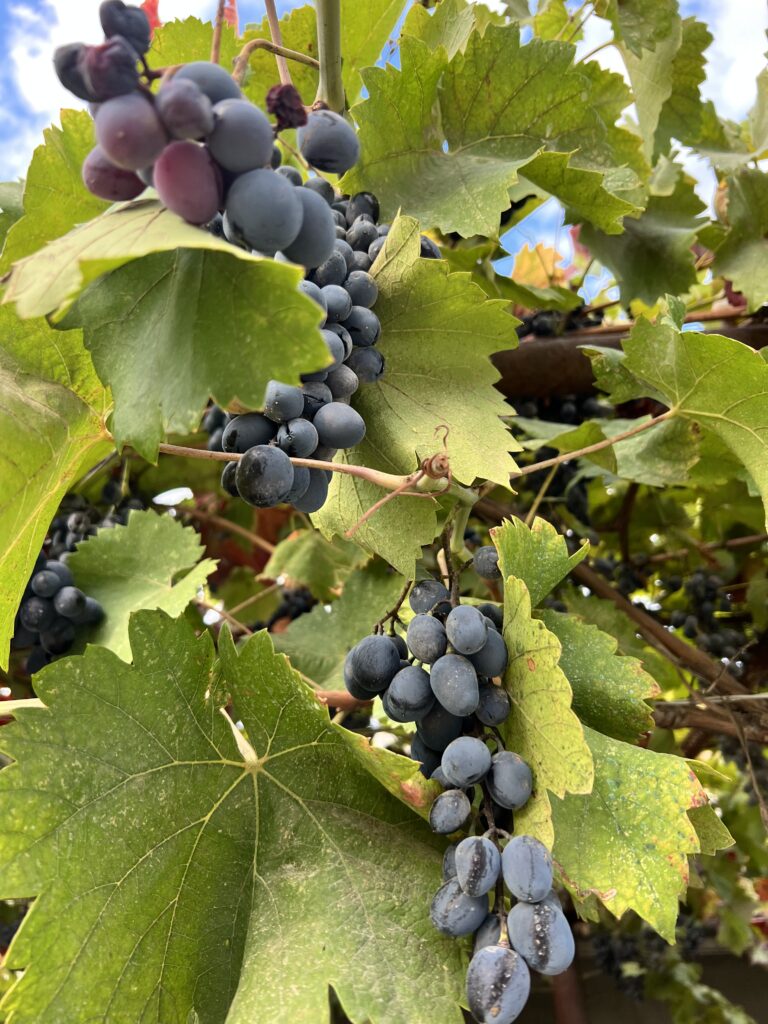
Conclusion
Moldova’s cultural heritage shows its long history and strong traditions. The lively festivals like Limba Noastră highlight this spirit. The beautiful art forms, including mosaics, folklore, and music, reveal the heart of Moldovan culture. Traditional clothing, such as the famous “Ia” blouse and woven carpets, reflect the pride and skill of its people. Holidays like Christmas and Easter bring families together in happy celebrations. This creates a bond and keeps traditions alive. The mix of Moldova’s past and present protects a rich legacy that matters even today. If you are curious about Moldova’s culture, take the time to discover its interesting traditions and enjoy its customs up close.
Considering a visit to Moldova? Check out my Complete Travel Guide to Moldova!
Or visit Moldova’s official tourism website here.
Frequently Asked Questions
What are the Major Festivals Celebrated in Moldova?
Major festivals in the Republic of Moldova are important celebrations. They include Martisor, which welcomes spring. The Wine Festival shows off Moldova’s wine-making traditions. Limba Noastră is a national holiday that honors the Moldovan language. There are also many community events and social gatherings, like village fairs, that showcase the country’s cultural heritage.
Can you Explain the Importance of wine in Moldovan culture?
Wine plays a big role in the culture of the Republic of Moldova. It is a key part of traditional culture, social gatherings, and celebrations. The famous vineyards, homemade wines, and strong brandy show how important winemaking is. These traditions have been handed down through many generations.
What Role Does Folklore Play in Moldova Today?
Folklore is an important part of Moldova’s cultural heritage and national identity. It lives on in music, dance, and storytelling. This art is especially lively in rural areas and among ethnic minorities. It shows the many influences that shape the country.
What is the Family Culture in Moldova?
Family culture is very important in the Republic of Moldova. People build strong family ties by sharing meals and celebrating national holidays together. They also keep close relationships with extended family. Godparents are a big part of a child’s life in Moldova and have a special role in their upbringing.
Recent Posts
Related Posts
Best Places to Visit in Pennsylvania: Adventure Awaits!
Best Places to Visit in Pennsylvania- Key Highlights With Pennsylvania’s rich variety, there’s something for everyone, from…
10 Interesting Facts About Indiana You Didn’t Know
Key Highlights- Interesting Facts About Indiana Introduction Indiana, particularly northern Indiana, is often called the “Hoosier State.”…
Best Places to Visit in Indiana: Top 10 for Travelers
Key Highlights- Best Places to Visit in Indiana Introduction Indiana is a place where you can find…

